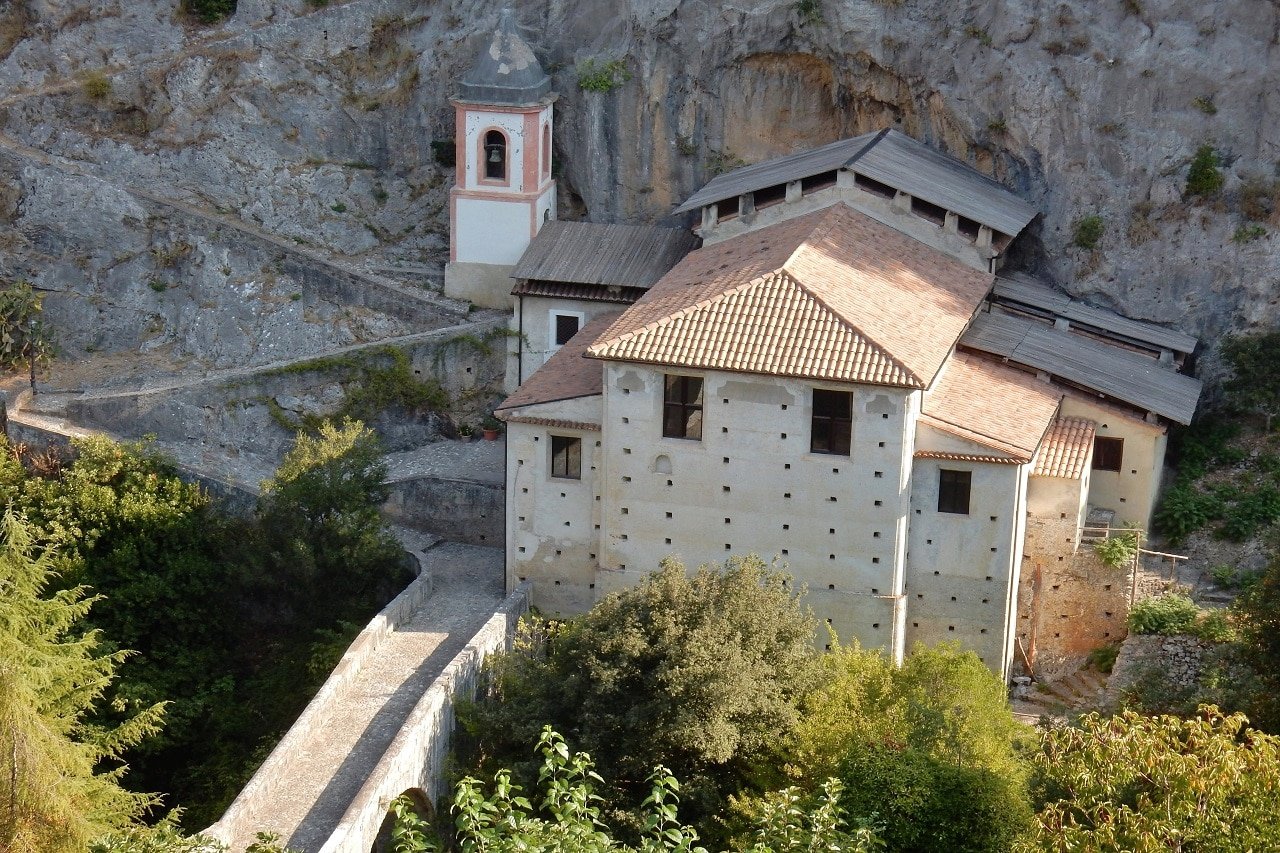The Sanctuary of Santa Maria di Costantinopoli,is an architectural complex that dates back to the 17th century and is located in the characteristic village of Papasidero (Cs). Already from its spatial location, one can see that it is a logo rich in beauty and suggestion: the Sanctuary is in fact leaning against an imposing rock face. This belongs to Mount Ciagola, and is a high cliff overlooking the Lao river, which flows directly below the building, making the landscape unique and absolutely characteristic.
We are in the so-called Mercurion area, in the Lao valley, an area frequented by man since prehistoric times, which over the centuries has been a point of reference for Byzantine monasticism.
In fact, this region was rugged and difficult to reach at the time and was chosen by Basilian monks as a place of prayer and meditation.
Testifying to this are ancient paths (such as the monk's path), small Byzantine shrines, chapels and characteristic sanctuaries that dot the valley and present themselves to travellers as small hidden treasures: the Sanctuary of St Mary of Constantinople is one of them.
How to reach the Shrine of St Mary of Constantinople
Arriving at the Sanctuary is in itself an experience not to be missed, given the natural setting in which it is immersed. It is reached on foot, crossing a stone bridge that joins the two banks of the Lao river. The bridge, built in 1904, recalls the ancient medieval bridge, still visible today, known as the Rognosa.
What is the reason for this name?
Apparently, the sanctuary church stands on an older church that was used as a lazaret when the plague broke out in the 17th century.
Once you cross the bridge, you come to a wide, paved road with steps carved into the rock: climb these to finally reach the sanctuary.
The church and its history
The church and the adjoining bell tower as we see them today are the result of a 17th-century intervention. The presence of an older church is already attested in the late Middle Ages.
It was the second half of the 17th century when the plague was spreading in Papasidero, as in many other Italian municipalities, and almost halved the village's inhabitants. The Papasideresi, therefore, did not hesitate to turn to Our Lady of Constantinople, naming her their patron saint in place of San Rocco, who became co-patron saint for the occasion.
It was against this backdrop that the decision was made to enlarge the existing building, and the result is the current Sanctuary.
The layout of the church is very simple: it has a T-shaped plan with three naves. These are marked by round arches resting on pillars. Near the altar, a 17th century fresco depicting a Madonna and Child flanked by the Archangel Gabriel vanquishing the devil is still visible.
Today, the Sanctuary is a pilgrimage destination for the Lucanian population and represents a symbolic place where history, faith and identity meet.
